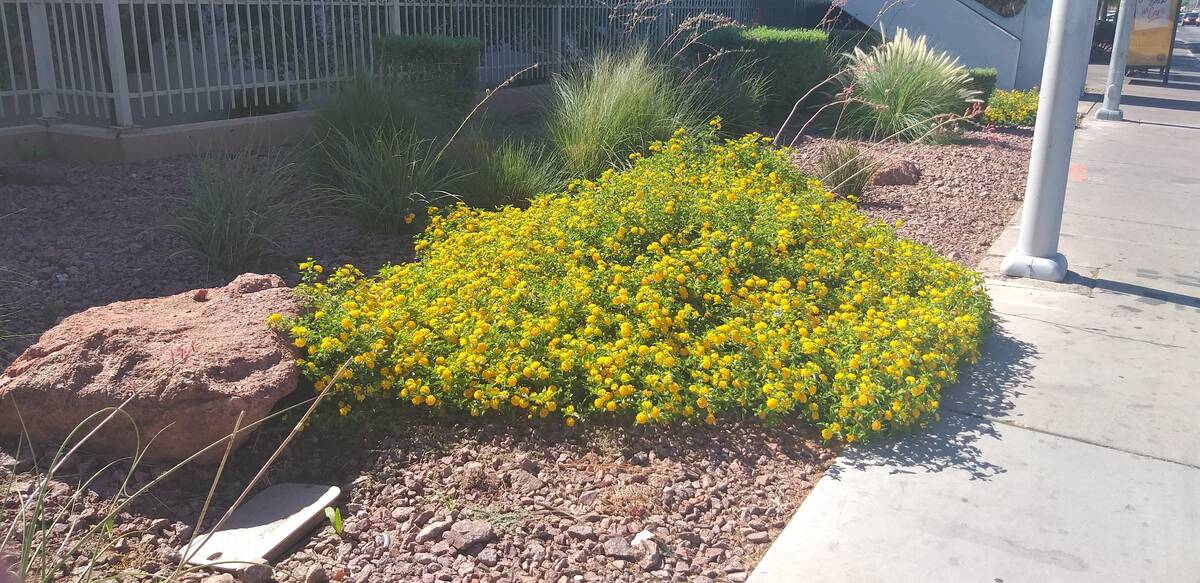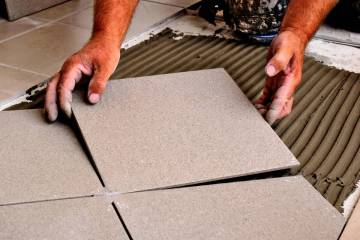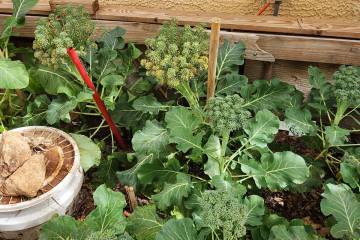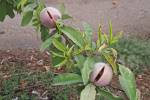Transplant smaller Joshua tree for better survival
Q: We have a few Joshua trees on our property. We planted three more that were relocated from Arizona and had the proper permits. They didn’t do well so we dug them up and saw root rot. Does it make sense to cut away any damaged rot? Or perhaps you have a better suggestion all together.
A: My experience with native Joshua tree survival after transplanting is that the larger the tree, the poorer the survival. The biggest reasons for lack of success were watering too often and poor soil-water drainage. Smaller plants are capable of surviving relocation better than larger well-established ones.
Survival tricks can be used sometimes when relocating plants such as orientation and soil additives. Some tricks made sense such as removal of a portion of the plant’s top to compensate for root loss and improve transplant success. Outside of orientation and soil additives, how are size-reduction tricks done to yuccas?
Native plants have a very wide and established root system. Big native plants look beautiful but are exceedingly difficult to move from the wild primarily because of their established root system. The same is true of established landscape plants; smaller ones are easier to relocate than larger ones.
It’s best to plant Joshua trees less than 3 feet tall that were established first. Dip the roots and lower stem in a Bordeaux paste and let it dry before planting. This gives cacti some protection from watering too often. Amend the soil at the time of planting and stake them if needed. Water at first planting and then every three weeks until they have rooted.
Q: I have lots of borers in my trees. What can I do to prevent it from happening?
A: First, prevent sunburn to all trees, particularly young fruit trees. Sun damage is a problem immediately after planting in our desert climate. Damage from the sun can lead to borer problems later down the road. If I were buying a fruit tree, I would buy a small tree and let it grow as a bush. This way the lower limbs will shade the trunk.
As soon as it starts to produce fruit, I would remove the lower limbs the next winter only so the fruit does not touch the ground. I would leave as many of the lower limbs as possible to shade the trunk.
The biggest mistake homeowners make with fruit trees is to buy large fruit trees with limbs high off of the ground. If lower limbs are present, they are removed to make a tree.
It may be the right thing to do in other climates but not in the desert. Desert fruit trees need tender trunk protection from the sun to about 5 or 6 years old. If you have a fruit tree and it is limbed up, then protect the trunk with diluted latex paint, tree wrap or a protective collar that shades it.
A sign of a borer problem is limb death in the middle of summer — brown dried leaves clinging to one or more branches on the south or west side of the tree starting when it is hot. Use a borer soil drench with an approved pesticide for borers. You are not permitted to eat the fruit until 12 months have passed. This particular pesticide is best applied after flowering.
Q: My lantana is about to eat my house. The plants are 15 to over 20 feet wide each. My neighbors’ lantana is only about 4 feet across. Mine is much too large for the space given to them. Should I cut them back now?
A: You can cut them back now to about an inch. It will leave the area bare and twiggy. There is time for them to grow and fill out again. If you have the time, selectively cut back the bigger diameter stems and leave the smaller ones closer to the center. This will leave the newer flowers but reduce its size.
If it does not freeze, it will grow from its terminal or side buds and get big. Next year, cut it all back to an inch of the soil in early January regardless of whether it freezes or not. This will contain its size. Your neighbors’ plants were probably cut back during the winter.
Q: I live in Oracle, Arizona, and my 15-year-old Arizona rosewood has some dying branches in it.
A: Dying branches usually indicate a water transport problem, mechanical damage, diseases, chemicals or borers. Arizona rosewood is a 12- to 20-foot-tall xeric tree native to the Sonoran deserts. It is considered a lower water use alternative to oleanders.
Arizona rosewood is so new to the landscape industry (less than 30 years old) that not much is known about it. This may require some detective work on your part. It should start to flower and produce small fruit between 6 to 8 years of age so your tree should have started flowering nearly 10 years ago.
It is in the rose family so check for damage from borers and fireblight. Other disease possibilities that may include single branch dieback include verticillium wilt.
Even though this is a xeric plant and can handle less frequent applications of water, make sure water is applied deeply and occasionally during the summer, particularly during dry periods. Water applications should be about four times each year, particularly during the hot summer months, and to a depth of about 18 inches. The water should be applied to at least half the area under the trees canopy.
There is some discussion about its potential sensitivity to landscape weed killers. Make sure nothing was used close to this plant.
Q: I did not want to use a pesticide to control borers in my fruit trees. Are there any other options you can think of?
A: I understand your concerns about using pesticides in fruit trees. In the desert, it is more difficult when borer numbers in older neighborhoods are a problem. These beetles can be in pyracantha, cotoneasters, flowering plum and other trees and shrubs in the rose family.
Borer damage can be minimized by controlling sun damage to fruit trees, lowering the numbers of borers in a community and cutting out damage when it is seen using a clean knife. First is sun damage. Protect exposed parts of susceptible fruit trees with shade. Shade the trunk and exposed limbs with either water diluted paint, its own growth or anything to decrease the sun damage.
A high population of borers can lead to lots of borer damage. Borers are the worms or larvae of the adults that are beetles.
Some communities, particularly older ones, have no control of borer-infested trees and shrubs. This leads to an extremely high population of borers that fly about looking for places to lay eggs in these communities.
When they become adults, borers exit the tree as the adult beetle. The adult beetle flies, mates, and the female lays eggs again, usually on sunburned wood of susceptible trees. No one knows exactly when these borers fly, but they can be around anytime from March until warm weather stops in the fall.
Watch for borer damage to occur. If you are paying attention, damage can be seen in early March, but its outward appearance isn’t visible to most until July and August. Then the leaves turn brown and hang from one or two dead branches. If the damage is seen early enough, dig out the living “worms” just under the bark of fruit trees using a sharp, clean knife.
Bob Morris is a horticulture expert and professor emeritus of the University of Nevada, Las Vegas. Visit his blog at xtremehorticulture.blogspot.com. Send questions to Extremehort@aol.com.





























